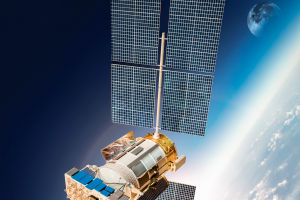Rockets, as high-tech devices used to propel spacecraft upward or forward, are widely applied in space exploration and scientific research.
The origin of rockets can be traced back to ancient times, but it was in the 20th century that they truly transformed human history.
This article will introduce the basic working principles of rockets, their development history, and their important roles in various fields.
1. Basic Principles
The working principle of a rocket is based on Newton's third law: "For every action, there is an equal and opposite reaction." Specifically, a rocket generates forward push by burning propellants and expelling the resulting gases at high speed through a nozzle.
Rocket propellants come in two types: liquid propellants and solid propellants. Liquid propellants typically consist of a fuel and an oxidizer, which, when burned, produce gases that are expelled through the nozzle; solid propellants burn in a solid form.
A key challenge in rocket design is providing sufficient push while maintaining structural stability. This requires precise engineering calculations and the use of advanced materials. Rockets must not only generate powerful push but also withstand extreme temperature variations, air resistance, and the intense vibrations generated during launch.
2. Applications in Modern Society
With continuous advancements in technology, the applications of rockets have expanded significantly. Today, rockets are not only used for launching satellites and conducting space exploration but also play crucial roles in various other fields.
(1) Commercial Spaceflight
With the rise of private companies such as SpaceX and Blue Origin, rocket technology has entered the realm of commercial spaceflight.
SpaceX’s successful development of reusable rockets, such as the Falcon 9, has significantly lowered the cost of space launches, ushering in a new era for commercial space exploration. Frequent launch missions are making space travel increasingly feasible and laying the groundwork for future interstellar journeys.
(2) Scientific Research
Another major application of rockets is in scientific research. By launching scientific observation satellites, scientists can conduct detailed studies of Earth, the atmosphere, and the universe.
Rockets send observational satellites into Earth’s orbit, providing valuable data on weather patterns, geological monitoring, disaster early warnings, and other critical information that plays a key role in environmental protection and disaster management.
3. The Future
Despite the impressive advancements in rocket technology, numerous challenges remain in practical applications.
Firstly, the cost of rocket launches, especially with liquid-fuel rockets, remains high. Secondly, safety issues continue to be a persistent concern for the space industry. Each launch carries inherent risks, and ensuring safety throughout the launch process will be an important area of focus for future development.
In the future, as rocket technology continues to advance, humanity will be able to conduct space exploration more efficiently and at lower costs. Reusable rockets, nuclear-powered rockets, and more efficient propulsion technologies will be key areas of research. Additionally, as the commercialization of space accelerates, international cooperation will further drive the development of rocket technology, making space exploration no longer an unattainable dream.
The invention and development of rockets symbolize significant progress in human technological innovation. In the future, rockets will continue to play an irreplaceable role, not only serving scientific research and commercial needs on Earth but also paving the way for humanity's journey into interstellar travel.


